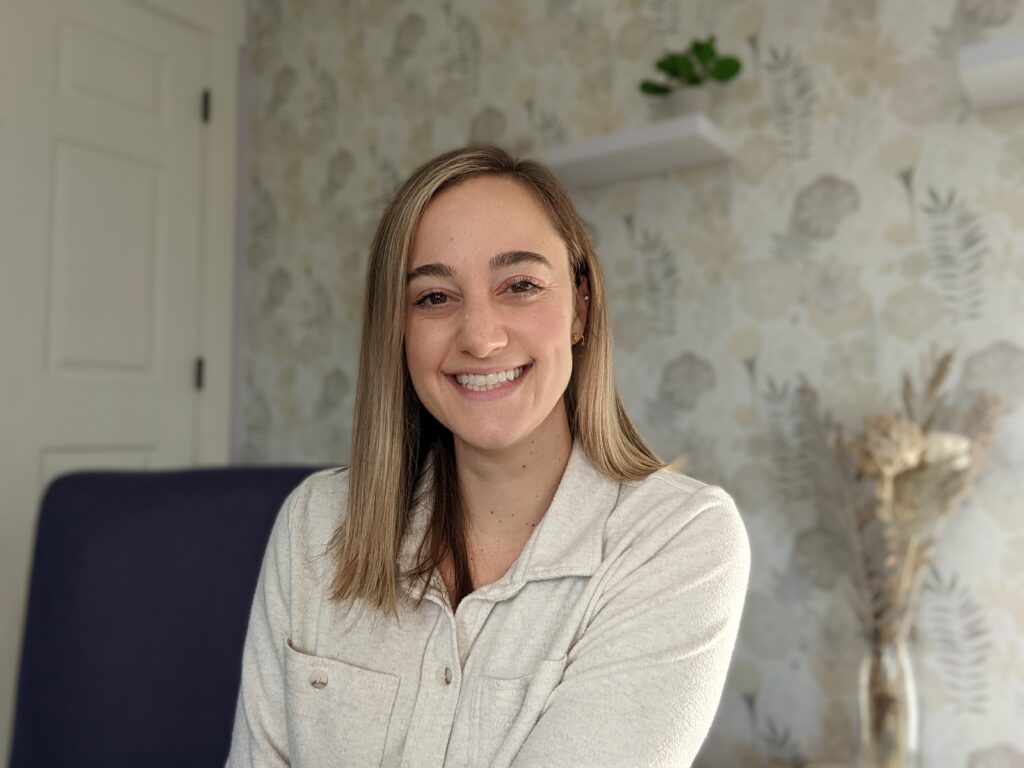Learn what nervous system regulation is and 3 nervous system regulation tools to start practicing now.
What Is Nervous System Regulation?
Nervous system regulation in rather simple terms is the ability to move between states of rest and arousal or activation in response to stress or threat. In a regulated nervous system, this looks like responding appropriately to the stressors, challenges, or threats that we face and then being able to recover back to rest and settle once they have passed.
This is much easier said than done because we live in a rather fast paced world with a heck of a lot of stressors and challenges that we face. Some of these challenges we experience at work, in our relationships and some we are experiencing at a more macro level-like being aware of climate change and it’s impacts on us/Earth, changes in the economy, the pandemic, etc.
Why is it Important to Know How to Regulate Your Nervous System?
Nervous system regulation mainly focuses on the autonomic nervous system (ANS). This is an involuntary system and is in charge of cueing physiological responses in your body to best adapt to its current environment. It controls your hormones, digestive system, immune system, respiration, heart rate, sleep, as well as fight/flight/freeze in response to stressors. Nervous system regulation helps to support our bodies returning to our rest and digest and recovery mode rather than staying “stuck on on” in fight/flight/freeze. There is much more nuance to the survival responses that won’t be addressed in this blog, and if you are interested in learning more about the ANS and the impact of chronic stress and trauma on the ANS, check out this informational video.

Basically, all that is to say is that knowing how to regulate your nervous system helps you recover from stress easier and increase regulation capacity to deal with stress in your body in the future. It helps us be present with more intense emotions and feelings without getting overwhelmed, shut down, or reacting. Additionally, it allows our body to be able to actually feel rested when we sleep, it helps our immune systems have all the resources to fight off infections and viruses, and it helps repair muscle.
When we are stuck in our stress responses, it can lead to burnout, illness, feeling more anxious, stressed, or depressed. We might feel more tired and fatigued and less engaged in our life.

3 Nervous System Regulation Tools
There are so many nervous system regulation tools out there, which is awesome, and here are 3 simples ones to start trying out. When engaged in these tools, the aim is to help the brain and body connect to the present moment, and register “okayness” or “relative safety”. Often, we need to give our bodies time to catch up when we go from one task or place to the next. These skills can help with that process.
*Disclaimer-I am not guaranteeing you will feel regulated doing these tolls as our bodies respond differently to different skills. Some skills are more available to us than others, so it is okay if one or more of these do not feel great for you. There are a lot of different ways for regulation, and these three might not be suited for you. Feel free to reach out if you are interested in working together and learning more about which ones might be.
1. Orienting
This can be done sitting, standing, or lying down.
Start to take in your space around you visually. Notice where your eyes want to look and how your neck wants to move. Allow your eyes and neck to move and look around. As you allow this, notice if there is anything neutral or pleasant you are drawn to looking at. This can be a picture on the wall, wallpaper pattern, the color of something, looking out the window, noticing the light or lack of light in the room, any shadows, plants, particular colors, or shapes, etc. Now spend some time looking at and noticing this thing (10-30 seconds).
Notice how the rest of you respond, do you start to relax more, do you sink into your seat more, does your breathing change, do you yawn or sigh, are you more aware of your legs or arms or body? Are there any sensations coming up, any changes in breathing, yawning, sighing others? Repeat if you would like and spend time with another object.
2. The Weight of Gravity
This can be done sitting, standing, or lying down.
If you are sitting:
Start to notice the connection of your legs on what you are sitting on. Notice the pull of gravity on your legs and/or feet towards the ground. Notice the heaviness of your limbs from the weight of gravity. If your hands are in your lap, notice the weight of your hands and the pull of gravity. Be with this for a while (20-30 seconds or longer). Notice how your body responds to being with the pull of gravity. Be with this sense as long as you would like.
If you are standing up:
Start to notice the connection between your feet and the ground. Feel the support of the ground against your feet. Start to feel the pull of gravity on your body and your weight being pulled towards the ground through your feet. You may shift slightly from one foot to the other, noticing how the pull of gravity and weight of your body feels different when more weight is on one foot. Notice the muscles that want to get involved. Be here for a few moments. Shift to the other foot and notice how it feels similar or different. Be here for a few moments. Notice how your body responds to being with the pull of gravity. Be with this sense as long as you would like. Repeat as needed.
If you are lying down:
Start to notice the connection between your back body and what you are lying on. Notice the support of it. As you notice the support, start to notice the pull of gravity on your body and how it pulls you into what you are laying on. You might find it is easier to notice the pull of gravity on your legs or your arms or your head, whichever is easiest to notice the pull of gravity, just be with that (20-30 seconds or longer). Notice how your body responds to being with the pull of gravity. Be with this sense as long as you would like.

3. Joint Movement
This can be done sitting, standing, or lying down
If you are sitting or lying down:
Start by looking at your feet/ankles if you are able. Start to slowly rotate the ankle joint. Begin with very slow open and close joint movements, and you will notice some other joints and muscles might get involved. Now start to do full rotations of your ankle-if this is in your ability. Go slow and after some time, change directions. After some more time play around with the speed. Find the speed that feels the best. You can also go back to the open and close movements. You can stay with your ankles, or you can repeat the above with your wrist joints.
Notice how your body responds, does it start to relax more, do you sink into your seat more, does your breathing change, do you yawn or sigh, are you more aware of your legs or arms or body?
If you are standing:
You can repeat the above with your ankles but do it standing on one foot or leaned against a support (wall, chair, couch, other person). Or you can just focus on your wrists. Slowly opening and closing your wrists joints while looking at your hands. You can play around with an open hand or a closed fist. You can start to make full circles with your wrists, still going slow. Next you can change directions and then start to play around with speed. Notice the speed you like the best. Be with the wrist movement and speed that feels the best for a while. Notice how your body responds, does it start to relax more, do you sink into your seat more, does your breathing change, do you yawn or sigh, are you more aware of your legs or arms or body?

Now what?
These nervous system regulation tools are not meant to take very long and can be easily added into your day-they are not meant to make things more stressful for another thing to be added to your to do list. Here are some suggestions for when you can practice these:
- When you wake up
- In your car before going into work
- In a meeting
- Bookends to a lunch or snack break
- While waiting on hold
- In line at the grocery store
- In the waiting room of any office (dr. appointment etc.)
- Any transition in your day (going from one task to the next, going from work to home, going from homework to relaxing, going from your car to inside your house or next destination)
- When you reach for your phone to check social media
- Anytime you have 30 seconds to a few minutes
Changes won’t happen overnight. While doing these exercises, you may notice feeling more present, less tense, okay, calm, etc. For longer term increase in regulation, the shifts take time with consistency of using nervous system regulation skills. Working on nervous system regulation is an ongoing practice. Continuing to practice continues to strengthen and maintain your body’s ability to navigate and recover from stress.
If you are interested in learning more about nervous system regulation, other types of somatic therapy, how it can be incorporated into therapy, or if it is right for you, reach out for a free consultation.

I am a licensed therapist in North Carolina and Oregon and Somatic Experiencing Practitioner. I specialize in Somatic Therapy and Somatic Experiencing®.
© 2022-2023 Lexi Gross Counseling PLLC
